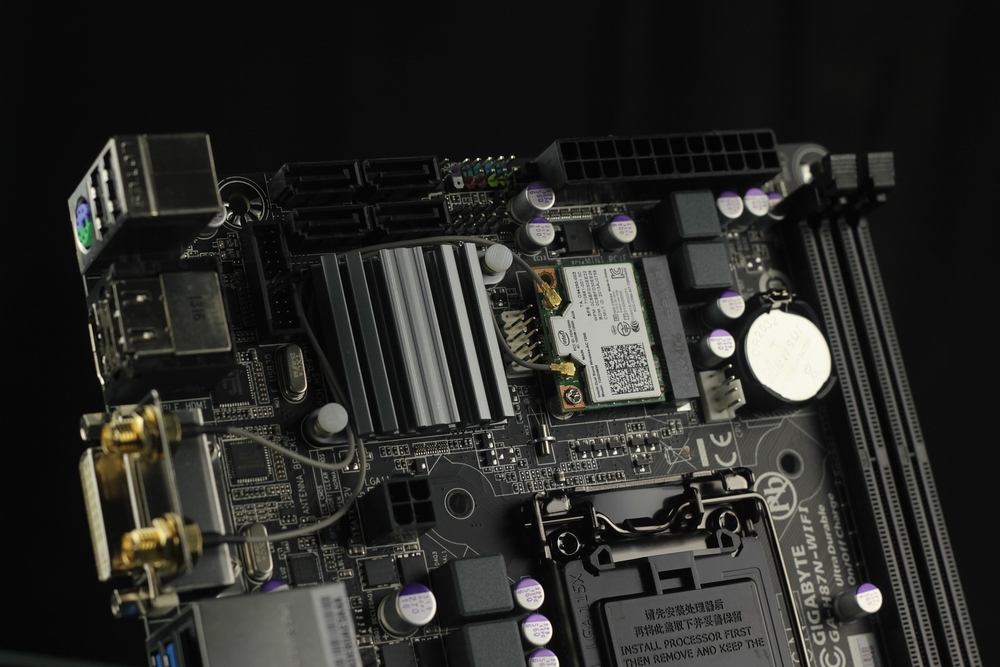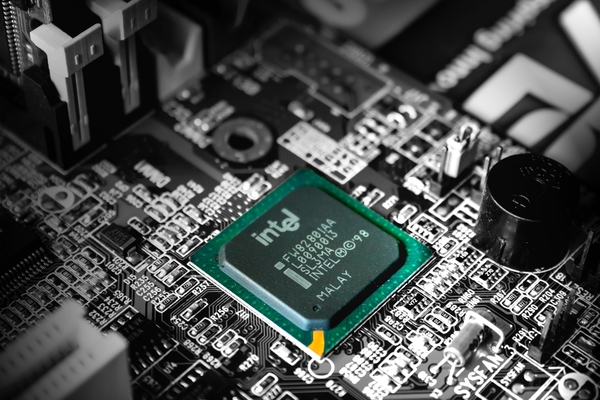Mini ITX vs. Micro ATX: What You Should Know About Each

Image source: Pixabay
When you’re building a computer, one of the most critical pieces is the motherboard. In your search for which parts to use, you’ll discover that there are two main motherboard formats, the Mini ITX vs. Micro ATX.
When comparing the Mini ITX vs. Micro ATX, you may have many questions about the differences. These questions are probably why you’re searching for information comparing the two.
Building a computer is a complicated process, and understanding what each part you purchase does is vital. When looking at the Mini ITX vs. Micro ATX, you’ll want to make sure you know exactly what each does. Most importantly, make sure you know the answer to the question, what are the Mini ITX and Micro ATX, and what do they do?
What Is the Mini ITX?
To compare the Mini ITX vs. Micro ATX, we need to know what a Mini ITX is. A Mini ITX is a compact motherboard designed to support relatively low-cost computers in small spaces.
This type of motherboard is in automobiles, set-top boxes, and network devices. As it’s meant for small spaces, it’s incredibly tiny, measuring 6.75 inches by 6.75 inches. The power supply is less than 100 watts with the processors running on very low power.
Video, audio and local area network (LAN) connection are built into the Mini ITX. It also comes with two Universal Serial Bus (USB) ports.
Additionally, it comes with a serial and parallel port, audio input and output, and a peripheral component interconnect (PCI) slot that can support up to two devices.
A computer built with a Mini ITX could be for simple everyday tasks.
Anything beyond email, browsing the internet, and using basic programs would likely be too much for a Mini ITX computer to handle.
What Is the Micro ATX?
To accurately compare the Mini ITX vs. Micro ATX, we need to know precisely what a Micro ATX is and what it does. A Micro ATX is the type of motherboard that has become the standard for computers. First introduced in December of 1997, a Micro ATX is generally 9.6 inches by 9.6 inches. However, some are made to be slightly smaller.
Most modern Micro ATX motherboards have a maximum of four peripheral component interconnect (PCI) slots. To conserve expansion slots and space inside the case, many manufacturers produce Micro ATX motherboards with a full range of integrated peripherals. For example, features such as integrated graphics, HD Audio, and Ethernet are integrated into the motherboard to conserve space and free up expansion slots.
Micro ATX computers can be for gaming as well as everyday tasks — these motherboards most commonly used by those building gaming computers. Their popularity comes from their balance of performance, size, and price.
What Does a Motherboard Do?
A motherboard is a printed circuit board that allows the CPU, RAM, and all other pieces of the computer to communicate with each other. It’s like the spine of your PC, and it’s the link between all the different components inside the computer.
There are vast differences between the motherboards of different brands. For example, the Mini ITX vs. Micro ATX is very different in size and number of expansion slots.
A motherboard from one manufacturer will support a single type of CPU and a few different types of memory.
Other peripherals such as video cards and hard drives may not be compatible. As a result, when building your PC, it’s essential to make sure that all the parts you’re buying are compatible.
What Factors Should You Consider When Purchasing a Motherboard?

Image source: unsplash
The motherboard is arguably the most critical component to consider when building a PC. Everything runs through the motherboard, so even if the rest of your ingredients are high caliber, if the motherboard is terrible, the PC will run poorly. As a result, it’s essential to make sure that you purchase a high-quality motherboard.
When looking for a motherboard, there are six main factors to consider: form factor, processor socket, random access memory (RAM), PCI slots, features, and SATA. As a result, when comparing the Mini ITX vs. Micro ATX, it’s vital to consider these factors.
Form factor
The first thing you should consider when purchasing a motherboard is the form factor. The form factor is the type of motherboard and its size. Different motherboard types such as the Mini ITX and Micro ATX correlate with their size.
Purchasing a motherboard only to find it’s too big for the case would be a nightmare for anyone building a computer.
With that in mind, make sure you measure your case before purchasing your motherboard. Alternatively, you could buy the motherboard first and then buy a computer case based on the motherboard you prefer.
Processor socket
Once you choose your form factor, you’ll need to decide on a processor socket. The processor socket you have will determine what processors you can buy.
There are three main types of processor sockets: LGA, PGA, and BGA. Intel processors use LGA sockets, whereas AMD processors use PGA sockets.
BGA processors are far less popular because they are permanently bonded to the motherboard and therefore can’t receive upgrades.
RAM
RAM is short for Random Access Memory, and the type of motherboard you get will determine how much and what kind of RAM you can have. It’s generally recommended to purchase a motherboard that can accommodate up to 16 gigabytes of RAM. Even if you don’t intend to use this much RAM initially, it will allow you to upgrade later if you choose.
Additionally, make sure you look for a board with four or more memory slots. Having four or more memory slots will allow you to install two RAM modules at first. With the extra two slots, you will have room for future memory upgrades later.
PCI slots
A PCI slot is a connection port that is on the motherboard. These ports allow expansion cards to be connected. As a result, when comparing the Mini ITX vs. Micro ATX, PCI slots are an essential factor to consider.
How many slots you need and what type of slots you need is dependent on what you intend to use your computer for. However, if you’re a gamer, you’ll want to make sure that you have at least one full-speed PCI Express x16 slot.
Features
It’s important to consider what features are built into the motherboard. Having certain elements will make your overall experience better. The more features built-in, the fewer expansion cards you’ll need to buy.
It’s common for motherboards to include onboard audio; however, this is only suitable for mid-range speakers and below. For high-end speakers, you’ll need to use an expansion card. Some motherboards will bundle Wi-Fi and Bluetooth features into the motherboard as well.
SATA
When considering a Mini ITX vs. Micro ATX, you need to consider the number of SATA ports each has. SATA ports allow you connect to storage devices such as your solid-state drive (SSD) or hard disk drive (HDD). Without a SATA port, there’s no way for you to connect your storage devices to the motherboard.
Mini ITX vs. Micro ATX
- Powered by 2nd generation AMD Ryzen AM4 processors to maximize connectivity and speed with dual NVMe M.2, USB 3.1 Gen2,...
- 5-Way Optimization with Auto-Tuning and Fan Xpert 4 automatically tailors overclocking profiles to your unique build for...
- Aura Sync RGB lighting plus 2 additional RGB headers provide a nearly endless spectrum of colors with the ability to...
- Supports 9th and 8th Gen Intel Core processors
- Dual Channel Non-ECC Unbuffered DDR4
- New 10+2 Phases digital PWM Design
Comparing the Mini ITX vs. Micro ATX is a challenging task. Each has its benefits and detriments. As a result, the best way to compare the two is to look at the pros and cons.
Pros of the Mini ITX
In our comparison of the Mini ITX vs. Micro ATX, let’s look at the pros for the Mini ITX first. The most significant benefit of the Mini ITX is that it is the smallest physically, and therefore is the best option for more minor cases.
Additionally, despite its small size, it can accommodate up to 32 GB of RAM, which is more than enough for a gaming PC.
Furthermore, many people find the Mini ITX to be very aesthetically pleasing. When building a computer, one of the biggest challenges can be making everything compact and uniform. With the Mini ITX being as small as it is, it should look good inside your case.
Pros of the Micro ATX
Next, in our comparison of the Mini ITX vs. Micro ATX, let’s look at the pros for the Micro ATX. Firstly, Micro ATX motherboards are generally the least expensive motherboards on the market because of their high demand. They are in such high demand because they are typically regarded as the ideal motherboard for single GPU PC builds.
Additionally, even though they are slightly larger than the Mini ITX, the Micro ATX can fit in nearly any case. The only time they wouldn’t fit would be in the most compact builds. Finally, the Micro ATX does have a higher RAM capacity and more PCI slots than the Mini ITX.
Cons of the Mini ITX
Now it’s time in our comparison of the Mini ITX vs. Micro ATX to look at the cons, starting with the Mini ITX. Unfortunately, a Mini ITX won’t work for multiple GPU setups, and they aren’t ideal for overclocking.
Additionally, they only have two RAM slots, which can be excellent for gaming PCs, but it can be very limiting.
Furthermore, with Mini ITX motherboards being so small, they look out of place in more significant cases. They’re also generally more expensive than Micro ATX motherboards.
Cons of the Micro ATX
Finally, in our comparison of the Mini ITX vs. Micro ATX, let’s look at the cons of the Micro ATX. Like the Mini ITX, Micro ATX motherboards are not suitable for multiple GPU setups.
They can do some moderate overclocking, but when it starts to get intensive, the Micro ATX motherboards tend to struggle.
Manufacturers of Micro ATX motherboards tend to disregard aesthetics.
As a result, if you’re trying to build a PC with a particular style, it may be challenging to fit in a Micro ATX in an aesthetically pleasing way.
Mini ITX vs. Micro ATX: Which Is Better?
When comparing the Mini ITX vs. Micro ATX, it’s essential to consider that each is designed for different types of computer builds. However, with that in mind, Micro ATX motherboards are more versatile and are more popular for a reason. They have more processing power, with more expansion slots, while still being relatively small.
A Mini ITX motherboard is generally only used for the most compact of computer builds. Additionally, they’re more expensive without being able to provide the same features as a Micro ATX motherboard.
Ultimately, however, when comparing the Mini ITX vs. Micro ATX, we can’t tell you which motherboard is better for you. Each has their strengths, and their weaknesses, and which is better for you depends on what type of PC you want to build.
Are you building a computer on your own for the first time? What motherboard are you leaning toward buying? Let us know in the comments!











